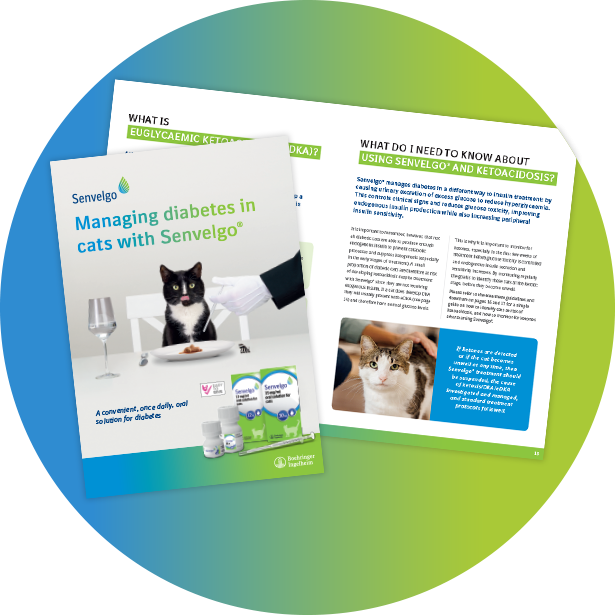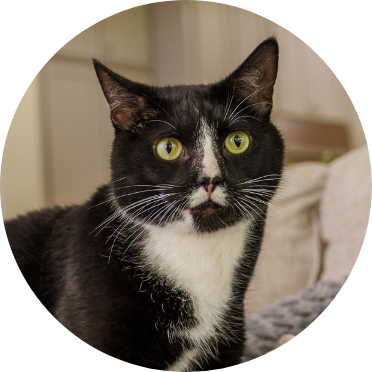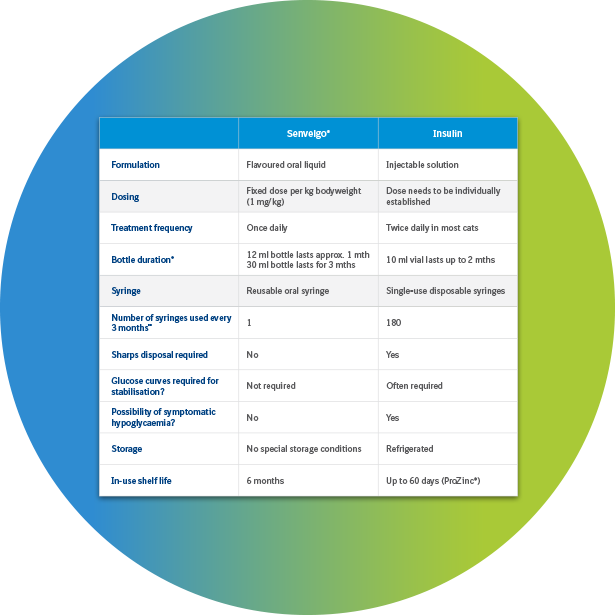
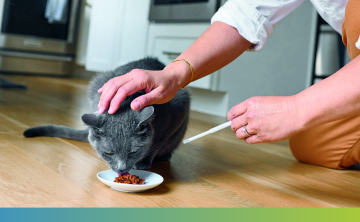
Starting & monitoring cats on Senvelgo®
Before starting Senvelgo®, the cat should be eating, drinking, interacting normally, hydrated and not showing any signs of DKA (or have any ketones present), with no evidence of clinical pancreatitis, cachexia or chronic diarrhoea. We call these ‘happy diabetic’ patients.
Start Senvelgo® at 1 mg/kg once daily
Start Senvelgo® at 1 mg/kg once daily (according to bodyweight syringe markings) either directly by mouth or with a small amount of food so that the entire dose is taken at once.
We recommend starting with the Senvelgo® 12 ml bottle which will treat a 5 kg cat for just over 1 month.
The priority in the first 2 weeks
The priority in the first 2 weeks is to monitor the cat for ketosis/DKA/eDKA to identify those cats who might not have enough endogenous insulin production:
- The owner should check for ketones at home every 1-3 days
- Check the cat in the clinic 1 week and 2 weeks after starting treatment to check they are healthy and not ketotic (assess history, perform a physical examination and check for ketones)
If ketones are detected
If ketones are detected, or the cat becomes unwell then suspend Senvelgo®, investigate further and manage accordingly for ketosis/DKA/eDKA and concomitant conditions. Only restart Senvelgo® if appropriate. We recommend contacting our Technical Services Team for advice with managing these cases and to discuss whether it is appropriate to resume Senvelgo® treatment.
Four weeks after starting treatment
At 4 weeks after starting treatment, check the cat at the clinic:
- Clinical control (e.g. thirst, appetite, physical examination, hydration status, bodyweight)
- Glycaemic control (e.g. fructosamine)
- Urinalysis (check for ketones and UTI)
Long-term monitoring
Thereafter, check the cat routinely every 3 months in the clinic according to standard diabetes treatment guidelines, including clinical & glycaemic control and urinalysis (to check for ketones and for UTIs).
The owners should develop a habit of routinely monitoring their cat for signs of illness and checking for urine ketones if any concerns.
We recommend using the Senvelgo® 30 ml bottle for longer term treatment.
Diabetes management flowchart
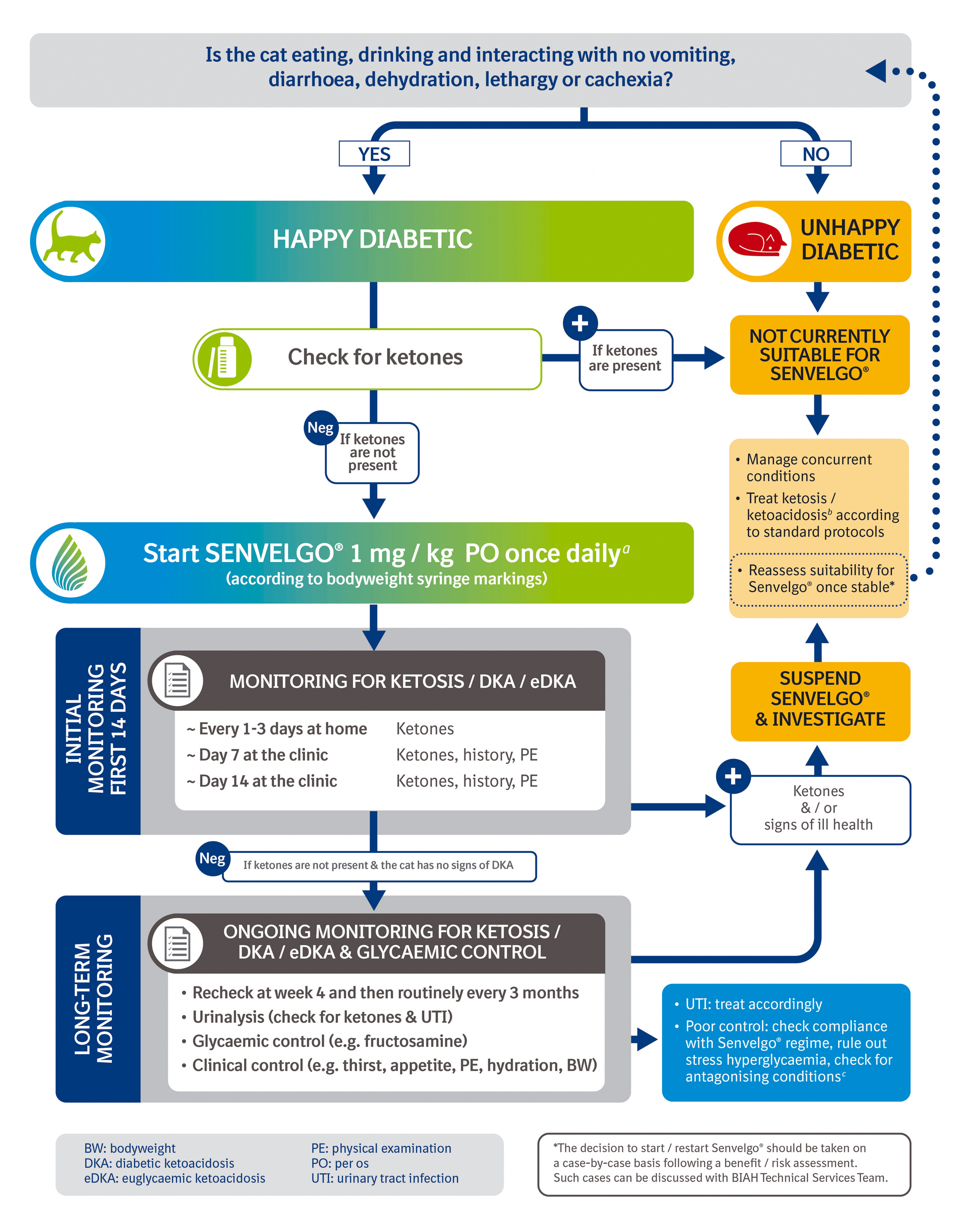
a. Cats previously treated with insulin may be at higher risk for DKA & should be monitored closely when starting treatment. If transitioning from insulin, omit the insulin evening dose the day before starting Senvelgo® treatment.
b. Soluble insulin & intravenous fluid therapy required to resolve ketoacidosis (supplement with glucose/dextrose if blood glucose <15 mmol/l).
c. A small proportion of cats may not respond adequately to Senvelgo® treatment due to true insulin deficiency, so long-term treatment with insulin may be required in these cases.
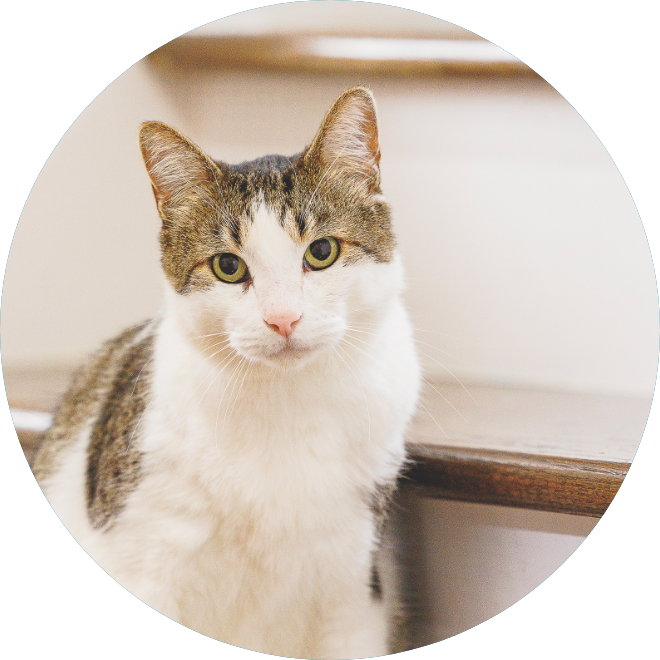
What is euglycaemic ketoacidosis (eDKA)?
All diabetic cats can be prone to ketogenesis, ketosis, and ultimately ketoacidosis, both before and during treatment. Monitoring for ketone production is always important, but especially for cats on SGLT-2 inhibitors. They can also develop a specific condition called euglycaemic ketoacidosis (eDKA). It is therefore important to understand these conditions, why they happen, and what to do about them.
Understanding ketosis, DKA and eDKA:
Ketosis
Ketosis refers to the presence of circulating ketones, but not at a level to cause acidosis. Most ketotic cats appear healthy, are eating and not sick, but require treatment for their diabetes before they become ketoacidotic.
Diabetic ketoacidosis (DKA)
Diabetic ketoacidosis (DKA) is a serious metabolic disorder which is normally characterised by marked hyperglycaemia, circulating ketones, metabolic acidosis and clinical signs such as dehydration, lethargy, anorexia, vomiting and weight loss. It is usually associated with untreated diabetes and/or concurrent disease in a treated diabetic. It is an emergency condition requiring urgent treatment with soluble insulin, intravenous fluids and dextrose supplementation.
Euglycaemic diabetic ketoacidosis (eDKA)
Euglycaemic diabetic ketoacidosis (eDKA) is a form of DKA which can be seen with SGLT-2 inhibition, with blood glucose controlled despite insulin deficiency. Cats with eDKA show typical signs of DKA but with blood glucose <14 mmol/l. They still, however, need to be treated in the same way as a standard DKA cat (including administration of soluble insulin) despite normal glucose levels.
What do I need to know about using Senvelgo® & ketoacidosis?
Senvelgo® manages diabetes in a different way to insulin treatment: by causing urinary excretion of excess glucose to reduce hyperglycaemia. This controls clinical signs and reduces glucose toxicity, improving endogenous insulin production whilst also increasing peripheral insulin sensitivity.
It is important to remember, however, that not all diabetic cats are able to produce enough endogenous insulin to prevent catabolic processes and suppress ketogenesis (especially in the early stages of treatment). A small proportion of diabetic cats are therefore at risk of developing ketoacidosis despite treatment with Senvelgo® since they are not receiving exogenous insulin. If a cat does develop DKA they will usually present with eDKA, and therefore have normal glucose levels.
This is why it is important to monitor for ketones, especially in the first few weeks of treatment before glucose toxicity is controlled and endogenous insulin secretion and sensitivity increases. By monitoring regularly the goal is to identify these cats at the ketotic stage, before they become unwell.
Please refer to the treatment guidelines and flowchart above for a simple guide on how to identify cats at risk of ketoacidosis, and how to monitor for ketones after starting Senvelgo®.
If ketones are detected or if the cat becomes unwell at any time, then Senvelgo® treatment should be suspended, the cause of ketosis/DKA/eDKA investigated and managed, and standard treatment protocols followed.
-
1. Niessen, S. J. M. et al. (2022) Once daily oral therapy for feline diabetes mellitus: evaluation of SGLT-2 inhibitor velagliflozin as stand-alone therapy compared to insulin injection therapy in diabetic cats. Journal of Veterinary Internal Medicine 36, 2512–2513.
-
2. Sparkes, A. H. et al. (2015) ISFM Consensus Guidelines on the Practical Management of Diabetes Mellitus in Cats. J Feline Med Surg 17, 235–50.
-
3. McCann, T., et al. (2007) Feline diabetes mellitus in the UK: the prevalence within an insured cat population and a questionnaire-based putative risk factor analysis. J Feline Med Surg 9, 289–9.
-
4. O’Neill, D., et al. (2016) Epidemiology of Diabetes Mellitus among 193,435 Cats Attending Primary-Care Veterinary Practices in England. J Vet Intern Med 30, 964–72.
-
5. Rand J, Gottlieb, SA. Feline diabetes mellitus. Textbook of Veterinary Internal Medicine, 8th edition. Ettinger SJ, Feldman EC and Cote E, eds. Elsevier, Missouri. 2017;1781-1795.
-
6. 2018 Summary of the Veterinary Clinic: Pet Obesity Prevalence Survey & Pet Owner: Weight Management, Nutrition, and Pet Food Survey. Available at:
https://petobesityprevention.org/2018. -
7. Niessen, S. J. M. et al. (2017) The Big Pet Diabetes Survey: Perceived Frequency and Triggers for Euthanasia. Vet Sci 4, 27.
-
8. Diabetes in Cats: Quantitative market research study. Proprietary presentation, July 19, 2021. Kynetec; St. Louis, MO, on behalf of Boehringer Ingelheim.
-
9. Niessen, S. J. M. et al. (2010) Evaluation of a quaility-of-life tool for cats with diabetes mellitus. J Vet Intern Med 24, 1098-105.
-
10. Behrend, E. N. et al. (2023) Velagliflozin, an SGLT2 Inhibitor, as a once-daily, oral solution, stand-alone therapy for feline diabetes mellitus. Oral abstract presentation, 2023 ACVIM Forum, Pennsylvania, Jun 15-17.
-
11. Niessen, S. J. M. et al. (2023) Efficacy and safety of once daily oral sodium-glucose co-transporter-2-inhibitor velagliflozin compared to twice daily insulin injection therapy in diabetic cats. Oral abstract presentation, 2023 ECVIM-CA Forum, Barcelona, Sept 21-23.
-
12. VMD. Summary of Product Characteristics (SPC): Senvelgo® 15mg/ml oral solution for cats (velagliflozin). Veterinary Medicines Directorate, UK.
-
13. CM Research (2022) Small animal vets UK April 2022. Syndicated Sales Rep Survey.

